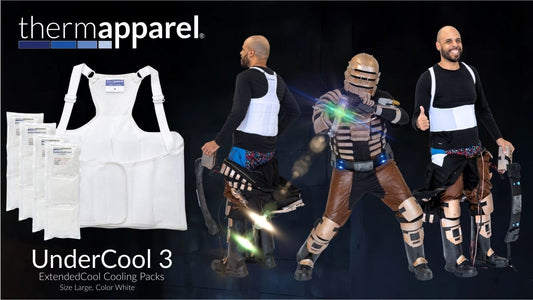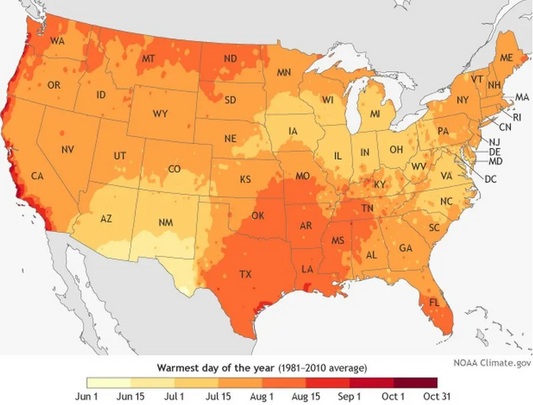Collection: Blog

ThermApparel Takes the Stage at USITT 2025 in Columbus, OH
ThermApparel joined theatre professionals from across the country at USITT 2025 in Columbus, OH! Watch as Julia shares our innovative cooling vest technology with over 1,000 attendees, helping actors, riggers, and crew discover new ways to stay cool under pressure—on stage, backstage, and beyond.

The Ultimate Guide to Cooling Vests for Santa, Elf, and...
Full Santa suits, Elf outfits, and Mrs. Claus ensembles look magical—but inside, temperatures can soar past 95°F! Our Ultimate Christmas Performer Cooling Guide shows you how to beat the heat with ThermApparel’s UltraCool and UnderCool 3 vests, so you can stay comfortable, makeup-perfect, and full of holiday cheer all season long.

How to Properly Store Your ThermApparel UnderCool Cooling Packs over...
Not using your ThermApparel Cooling Vest during winter? Whether you’re storing it away or using it year-round for activities like snow shoveling or winter workouts, we’ve got easy tips to keep your cooling packs and vest in top shape. Learn the best way to freeze, clean, and care for your gear to ensure long-lasting freshness and performance—and how to get your vest summer-ready again.

The Secret Costume Hack Every Actor Wishes They Knew
Stay cool and camera-ready under the hottest Broadway and Hollywood lights with ThermApparel Cooling Vests. Using advanced PCM technology, these lightweight, silent vests provide consistent cooling without condensation, perfect for actors, stunt performers, and costume wearers. Whether you need maximum cooling for elaborate costumes or discreet relief under a corset, ThermApparel has you covered with UltraCool, RallyWrap, UnderCool 3, and more. Discover how these vests keep you comfortable, focused, and makeup-intact for hours.

What are the 5 different types of ThermApparel Cooling Packs?
Five cooling packs, five unique superpowers. Why so many? Because PCM technology outperforms ice—and each pack is built for a different cooling mission. Find out which one fits your needs.

How We Stayed Cool at the Sterling Renaissance Fair —...
Beat the summer heat at the Sterling Renaissance Festival with ThermApparel cooling vests! See how the UnderCool 3 and UltraCool, paired with ExtendedCool Cooling Packs, delivered hours of dry cooling comfort in 95° weather — stay cool, dry, and energized all day.

Heat is No Joke: Understanding the Risks and Protecting Yourself...
Heat isn’t just uncomfortable, it’s dangerous. From humidity and heart rate spikes to overheating and dehydration, your body’s natural cooling system can quickly become overwhelmed. This post dives into exactly how heat affects the body, breaking down real physiological responses. It also reveals effective ways to protect yourself, including ThermApparel Cooling Vests, designed to keep you cool when you need it most.

Best uses for a Cooling Vest? EVERYTHING that makes you...
Overheating? You’re Missing Out.
What if one simple switch could help you do more this summer—without the exhaustion, sweat, or heat fatigue? From daily errands to big adventures, see how ThermApparel Cooling Vests and Gear are helping people stay cool and keep going. You won’t believe all the ways they’re being used.




